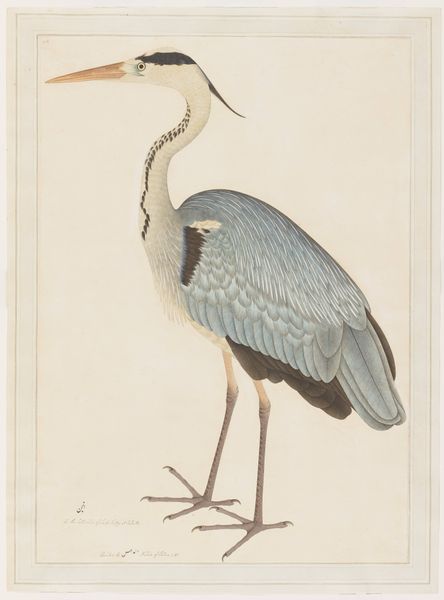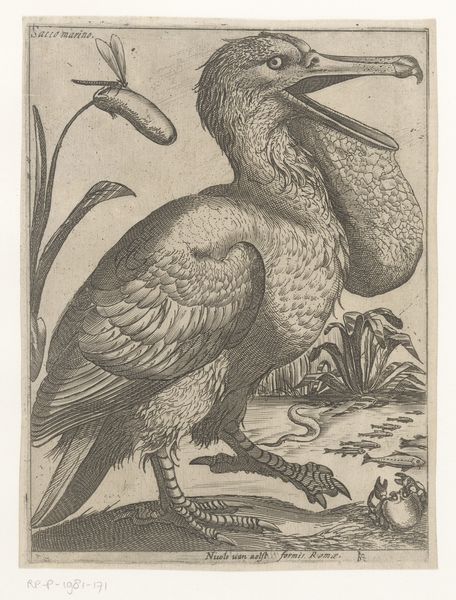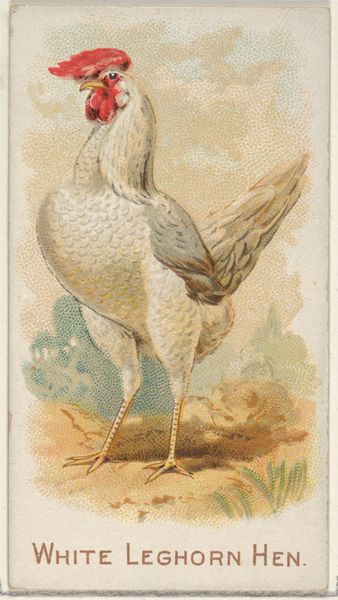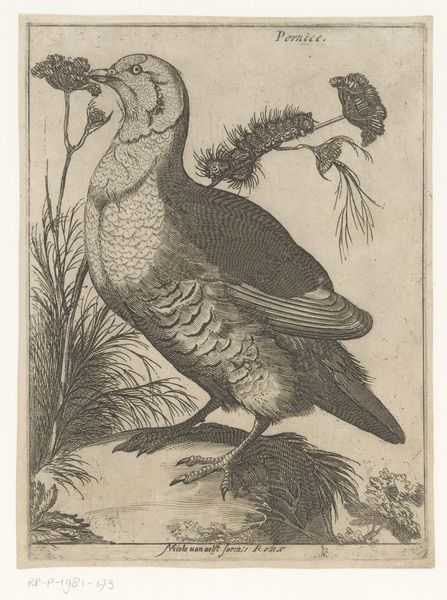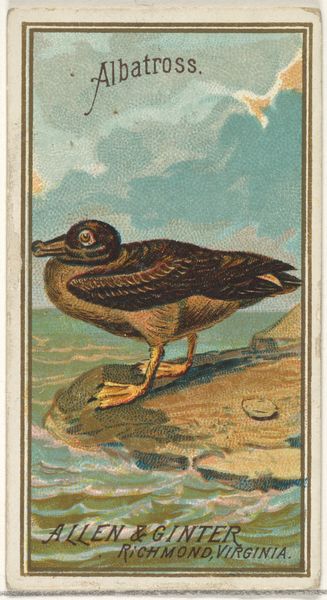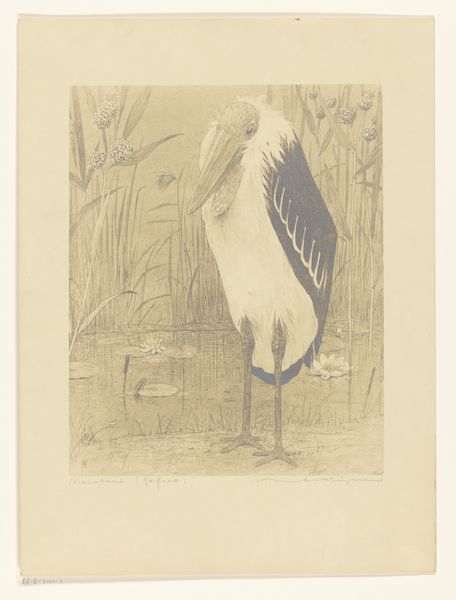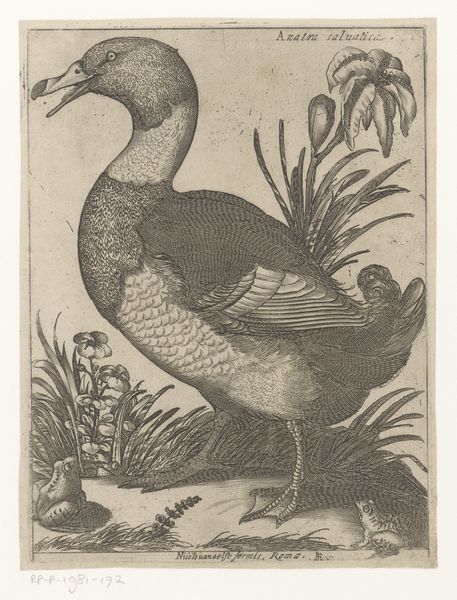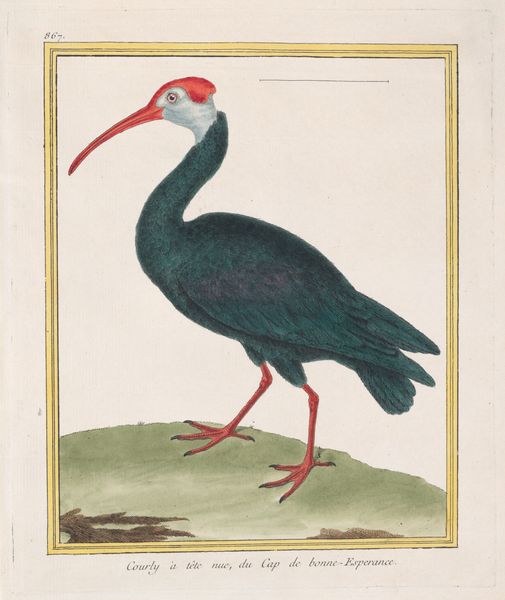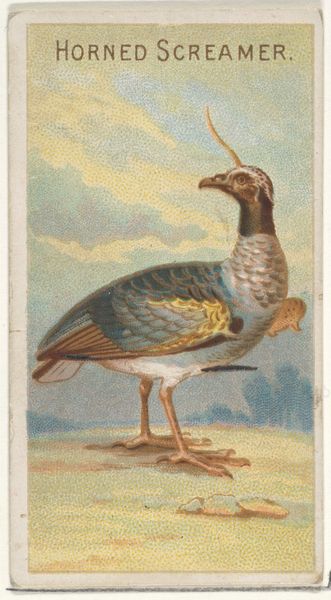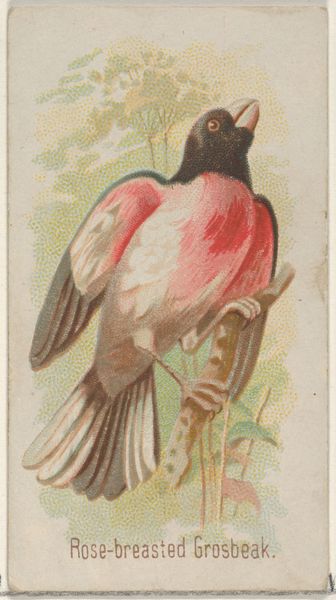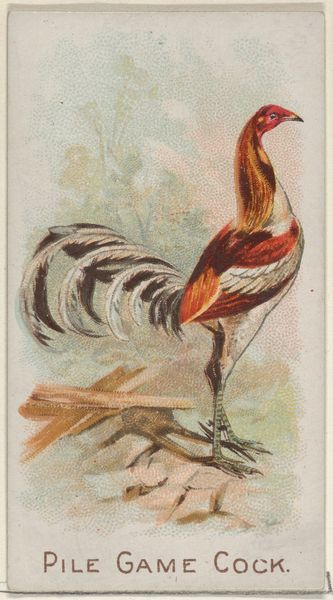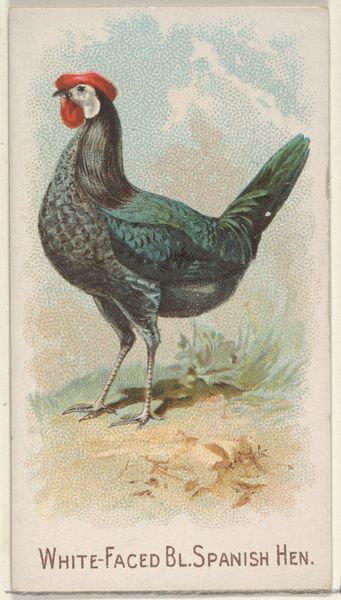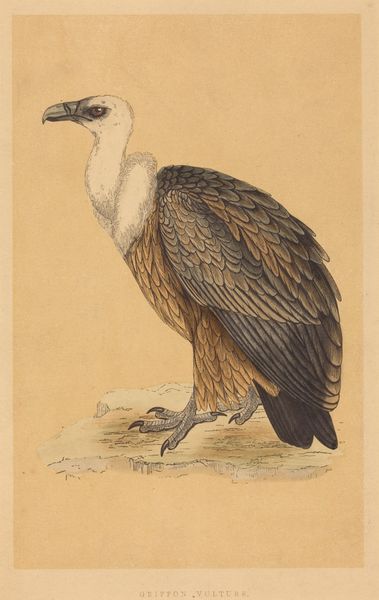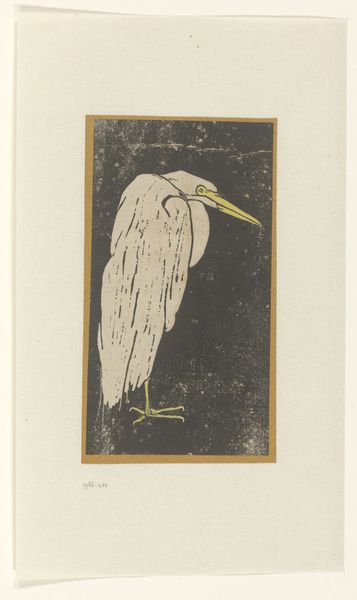
Dimensions: height 450 mm, width 210 mm
Copyright: Rijks Museum: Open Domain
Curator: At first glance, this piece gives me a very serene and slightly melancholic feeling. There's something very still and poised about the heron depicted here. Editor: You're picking up on the stillness, certainly. We're looking at "Kalenderblad augustus met nimmerzat" which translates to "Calendar Sheet August with a Greedy One." It's an impressionistic watercolor by Theo van Hoytema from 1904, currently residing at the Rijksmuseum. Curator: "Greedy One"? Is that a common nickname for a heron, or does it hold more symbolic meaning here? Because looking at it, it seems so self-contained and calm. It also casts a big shadow. Editor: Good question. Van Hoytema had a fascination with birds and their behavior. He created calendar designs, often featuring animals, in his unique art nouveau style. While the nickname suggests a connection to consumption and perhaps even gluttony, there is an intentional socio-political element here. Hoytema was well known as a social anarchist with strong anti-establishment leanings. Perhaps here he makes a quiet political statement about the voracious character of August’s cultural and political elite in 1904 Netherlands. Curator: That's a powerful layer. It challenges my initial interpretation. I had been drawn to the simplicity of the composition and its subdued color palette – the delicate ochres, blues and greens, so typical of impressionistic style. It seemed like an invitation to peaceful contemplation, but framing it through an anarchist lens certainly shakes that up. And I now also wonder about the positioning of the calendar grid just beneath the bird. Does this also represent in his vision that time marches forward—unchanging while power endures? Editor: I think it adds to the tension in the piece. The seemingly objective representation of time ticking onward clashes with that stillness we spoke of earlier— perhaps representative of social stasis? The bird is trapped both by this frame and the passage of days represented beneath. And thinking about it further—he chooses August when crops and abundance are high to embody his discontent. Curator: It is a quiet revolution then. The image now carries a charge that I didn’t recognize just a minute ago. Editor: Exactly, it is the deceptive nature of art, is it not? Something so seemingly calm, can belie something much more charged under the surface. Curator: And it is through exploring the art's origins and historical context we reach the truth.
Comments
No comments
Be the first to comment and join the conversation on the ultimate creative platform.
